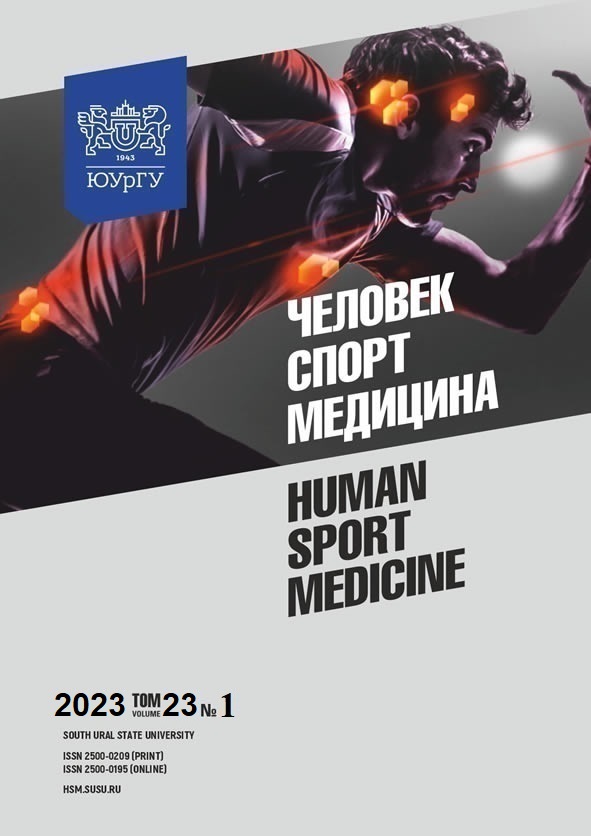KICKBOXING TRAINING STRUCTURE AND CONTENT IN 18–20-YEAR-OLD ATHLETES
Abstract
Aim. The paper aims to substantiate experimentally the structure and content of training among kickboxers aged 18–20 years. Materials and methods. The study involved the following methods: theoretical analysis and summary of scientific and methodological literature, pedagogical observation, modeling, control tests, a pedagogical experiment, and mathematical statistics. The study was conducted at the Boevoy dukh (Fighting spirits) sports club in Perm and involved kickboxers aged 18–20 years, divided into two groups (experimental and control, 10 people each). Training in the control group (CG) was based on the program for the kickboxers of the second year. Training in the experimental group included specially developed training sessions from the author’s program. Results. The analysis of the data obtained confirms the necessity of a training model for 18–20-year-old kickboxers to improve their functional, physical, and special fitness. Conclusion. Performance enhancement and the improvement of physical, functional, and special fitness require the coaching staff to constantly change training technologies and use innovative means and methods of sports training.
References
References on translit
Copyright (c) 2023 Human. Sport. Medicine

This work is licensed under a Creative Commons Attribution-NonCommercial-NoDerivatives 4.0 International License.















